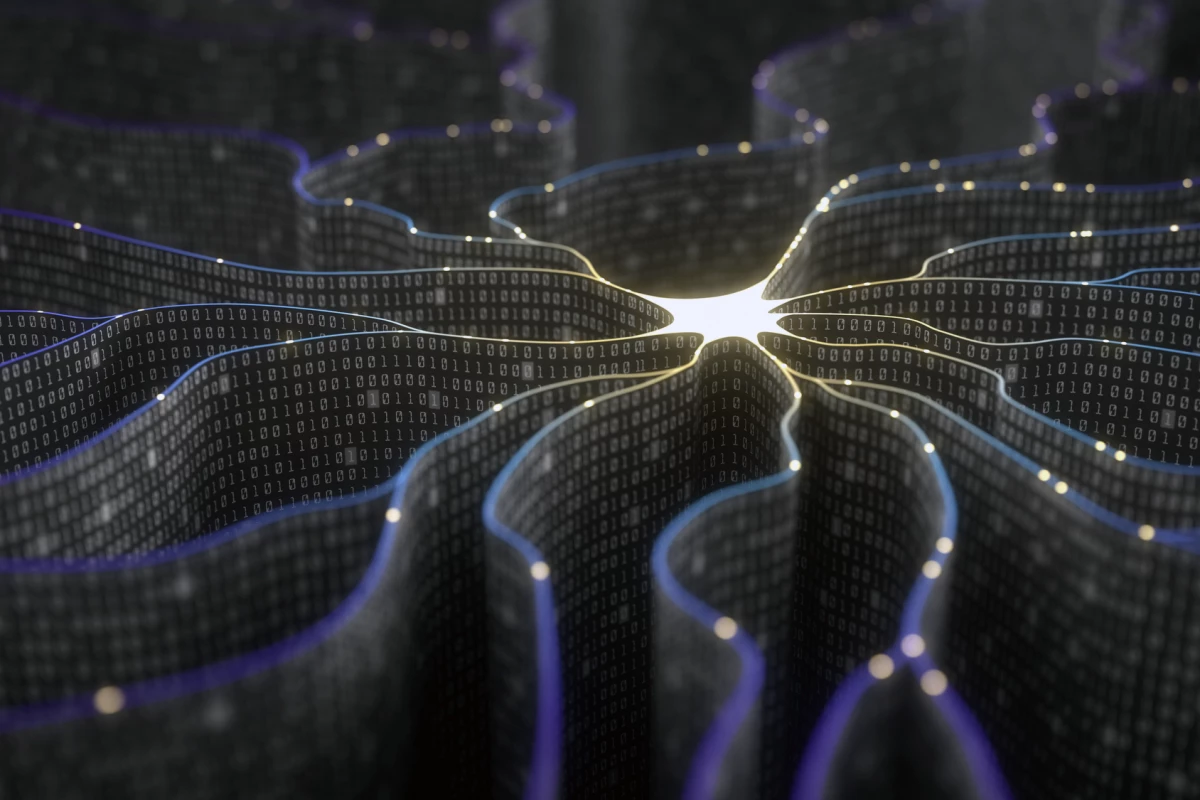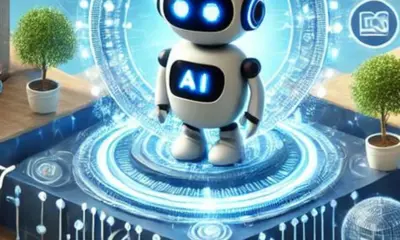Health
Scientists Create Realistic Artificial Neuron, Bridging Tech and Biology

Researchers at the University of Massachusetts (UMass) Amherst have developed an artificial neuron that mimics the behavior of biological neurons. This breakthrough allows the artificial neuron to fire, learn, and respond to chemical signals, potentially transforming fields such as computing and medicine. The study highlights the growing intersection of technology and biology, as scientists strive to emulate the remarkable efficiency of biological neurons.
Neurons are vital components of the nervous system, facilitating complex processes such as thought and movement through electrical and chemical signaling. The UMass team, led by Shuai Fu, a graduate student in electrical and computer engineering, aimed to replicate these functions in an artificial format. Fu noted, “Our brain processes an enormous amount of data, but its power usage is very, very low, especially compared to the amount of electricity it takes to run a Large Language Model, like ChatGPT.”
To create the artificial neuron, researchers utilized a type of memristor—a memory resistor—constructed from protein nanowires derived from the microbe Geobacter sulfurreducens. This bacterium’s conductive nanowires significantly lower the voltage required for switching, enabling the memristor to operate at low voltages of approximately 60 mV and tiny currents of around 1.7 nA. According to Jun Yao, PhD, an associate professor of electrical and computer engineering and the study’s corresponding author, “Previous versions of artificial neurons used 10 times more voltage – and 100 times more power – than the one we have created.”
Innovative Design and Functionality
The UMass researchers integrated the memristor into a simple resistor-capacitor (RC) circuit to replicate various phases of a neuron’s electrical activity. This design simulates the slow buildup of charge, the rapid depolarization when a neuron fires, and the repolarization that returns it to a resting state, including a refractory period after firing.
Additionally, the team incorporated chemical sensors capable of detecting ions, such as sodium, and neurotransmitters like dopamine. These sensors adapt the circuit’s electrical properties in response to chemical signals, a process known as neuromodulation. The researchers took their innovation a step further by connecting the artificial neuron to living human heart cells, or cardiomyocytes. They demonstrated the neuron’s ability to interpret biological signals in real-time, such as detecting changes in cardiomyocyte activity in response to the drug norepinephrine.
Yao emphasized the potential of this technology, stating, “We currently have all kinds of wearable electronic sensing systems, but they are comparatively clunky and inefficient. Every time they sense a signal from our body, they have to electrically amplify it so that a computer can analyze it. That intermediate step of amplification increases both power consumption and the circuit’s complexity, but sensors built with our low-voltage neurons could do it without any amplification at all.”
Future Implications for Bioelectronics
While this artificial neuron is still in the experimental stage and tested within controlled lab environments, it represents a significant advancement in the field of bioelectronics. The findings were published in the journal Nature Communications.
This development opens the door to numerous future applications. It could lead to technologies that repair or replace damaged brain circuits, enhance brain-machine interfaces (BMIs), or function as sensors monitoring cell health and drug responses in real-time. Because these artificial neurons consume minimal energy and operate at biological signal levels, they may pave the way for more efficient brain-inspired computing hardware.
As this research continues, the integration of artificial neurons into living systems could redefine our approach to both technology and biology, offering exciting possibilities for future innovations that seamlessly blend the two fields.
-

 Technology5 months ago
Technology5 months agoDiscover the Top 10 Calorie Counting Apps of 2025
-

 Health2 months ago
Health2 months agoBella Hadid Shares Health Update After Treatment for Lyme Disease
-

 Health3 months ago
Health3 months agoErin Bates Shares Recovery Update Following Sepsis Complications
-

 Technology4 months ago
Technology4 months agoDiscover How to Reverse Image Search Using ChatGPT Effortlessly
-

 Technology1 month ago
Technology1 month agoDiscover 2025’s Top GPUs for Exceptional 4K Gaming Performance
-

 Technology2 months ago
Technology2 months agoElectric Moto Influencer Surronster Arrested in Tijuana
-

 Technology5 months ago
Technology5 months agoMeta Initiates $60B AI Data Center Expansion, Starting in Ohio
-

 Technology5 months ago
Technology5 months agoRecovering a Suspended TikTok Account: A Step-by-Step Guide
-

 Health4 months ago
Health4 months agoTested: Rab Firewall Mountain Jacket Survives Harsh Conditions
-

 Lifestyle5 months ago
Lifestyle5 months agoBelton Family Reunites After Daughter Survives Hill Country Floods
-

 Technology4 months ago
Technology4 months agoHarmonic Launches AI Chatbot App to Transform Mathematical Reasoning
-

 Technology3 months ago
Technology3 months agoUncovering the Top Five Most Challenging Motorcycles to Ride





















